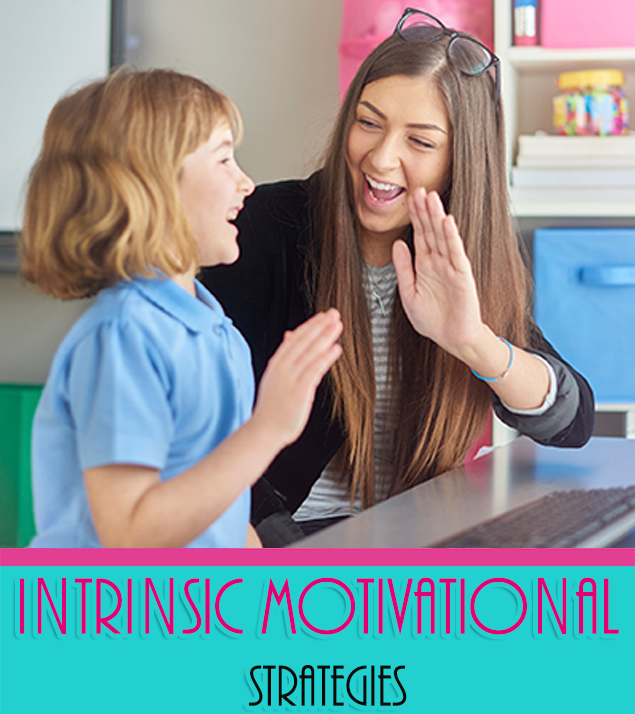How can Teachers Develop Intrinsic Motivation in their Students?
Posted by Network Support · Leave a Comment
Help students become intrinsically motivated by meeting their basic needs in the classroom. Motivated learners are better life-long learners. These strategies will improve student motivation in the classroom and lead to a better learning environment.
When we examine the behavior and/or emotional climate in our classroom through the lens of basic needs, problems become illuminated and solutions become more evident…
The idea of classroom motivation often brings to mind strategies that are used to provide incentives for students to do something and/or do it with greater intensity. Yet, when we examine motivation more closely we recognize that it is not always something that is added to the situation. It can be something that comes from an inner source of satisfaction such as personal fulfillment.
While it is true that there are few absolutes in the field of motivation, it can be helpful to classify various motivational strategies with those that are more extrinsic and those that are more intrinsic.
Extrinsic forms of motivation are those in which there is something added that comes from an external agent, such as a reward from the teacher (Alberto & Troutman, 2003). Contrastingly, intrinsic forms tap into internal sources. These forms of motivation may come from an inner source of satisfaction, such as personal fulfillment. In order for students to become intrinsically motivated it is important that their basic needs are met. This provides a classroom environment and emotional state of the students that personal learning can thrive.
Basic Needs
The basic human needs for love and belonging, power, competence, freedom, and fun seem to be inherent and universal. These basic needs exist continuously both in and outside the classroom. The evidence that a student comes from a home in which their basic needs have been met is usually quite apparent. Most likely they act more confident, centered, and trusting.
As teachers, we have to recognize that students have basic needs, and that those needs will manifest themselves, one way or another at school. When we examine the behavior and/or emotional climate in our classroom through the lens of basic needs, problems become illuminated and solutions become more evident.
1. Love & Belonging
The feeling of love and belonging is thought to be the most basic human need. When a student feels perpetually unloved, alienated or isolated, common internal reactions include a sense of guilt, worthlessness, loneliness, and lowered self-esteem, while common external reactions include acting out or over-achievement. Teachers can give students a greater sense of love and belonging by recognizing unique qualities and talents, creating an emotionally safe classroom environment, and showing genuine care and respect.
2. Power
A sense of power is fundamentally related to the development of an internal need for control. When a student feels they do not have any power, common internal reactions include becoming withdrawn and passive-aggressive, while common external reactions include rebellion and hostility. Teachers can give students a sense of power by giving them choices, giving responsibility and opportunities for leadership, and giving ownership for the development of class procedures.
3. Competence
Much of our identity is connected to what we can do, and how well we can do it. When a student feels useless, unvalued, incompetent or unappreciated, common internal reactions include losing motivation and/or a sense of inadequacy, while common external reactions include bragging, acting overly competent, attention-getting, and excuse-making. Teachers can give students a greater sense of competence by focusing on progress and not products, removing conditions in which comparisons among other students are used, recognizing incremental achievement and original ideas, expressing high expectations, and helping students achieve the goals they have set for themselves.
4. Freedom
Each of us needs to feel that we are autonomous and have freedom of choice. We must feel a sense of liberation to be able to express our individuality.When a student feels too restricted or imprisoned, common internal reactions are becoming withdrawn or resentful, while common external reactions include fighting back, active resistance and/or seeking paths around authority. Teachers can help students experience freedom through supporting autonomy and creativity, avoiding personal praise and disappointment, validating differing viewpoints within the class, and fostering the attitude that the teacher does not have nor must have all the answers, and the idea that everyone makes mistakes.
5. Fun
Each of us needs to be able to have fun and experience wonder and joy. When a student is put in a repressive and/or tedious environment, common internal reactions include boredom, frustration and daydreaming, while common external reactions include making one’s own fun, engaging the teacher in (off-task) games, and hostility. Teachers can promote students’ sense of fun by the use of humor, providing opportunities for creative play, making learning engaging and interesting and a thoughtful use of healthy competition.
Once these five needs are met in the classroom, students are more likely to want to learn. They are given a space where they can focus on learning and create the desire to learn in themselves.
Like this article for teachers?
Browse the Professional Learning Board COURSE CATALOG to find related online courses for teachers in your state. Professional Learning Board is a leading provider of online professional development classes that teachers use to renew a teaching license or renew a teaching certificate.





